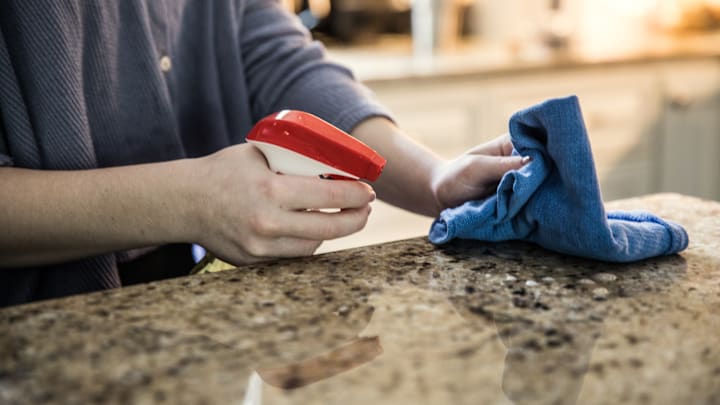Along with the bathroom, the kitchen is bacteria's favorite place in your home. That kitchen sponge? It can grow enough crud to shame a Petri dish after a few weeks. So can dirty dishes left to soak in the sink.
But according to new research, the single most germ-ridden location in the kitchen is an unusual suspect: the spice jar.
A study published in the Journal of Food Protection and commissioned by the U.S. Department of Agriculture examined the greatest risks for cross-contamination in the kitchen during meal preparation. In an experiment involving 371 participants, study authors used a harmless organism, bacteriophage MS2, and inserted it into raw turkey patties. They directed subjects to prepare a turkey burger using the patties and some pre-packaged lettuce, then waited for the mayhem to unfold.
Subjects handling the turkey patties and then grabbing other kitchen items resulted in a 20 percent or lower positivity rate for cross-contamination, meaning MS2 was found on 20 percent or less of surfaces like utensils and countertops. But for the spice containers, the positivity shot up to 48 percent, with the highest concentration of MS2 found. Put simply, the spice racks were gross. (Cutting boards and trash can lids came in second and third, respectively.)
“In addition to more obvious surfaces like cutting boards, garbage can lids and refrigerator handles, here’s something else that you need to pay attention to when you’re trying to be clean and sanitary in your kitchen,” said Donald Schaffner, the study’s lead author and a professor in the department of food science at the Rutgers School of Environmental and Biological Sciences. “Our research shows that any spice container you touch when you’re preparing raw meat might get cross-contaminated. You’ll want to be conscious of that during or after meal preparation.”
Washing your hands, as these participants apparently neglected to do, is necessary after handling raw meat, poultry, and other bacteria-harboring foods. Any surface the meat or your contaminated hands touch should be disinfected.
The FDA recommends a four-step food handling strategy: clean hands and surfaces, separate raw foods from other foods, cook to the appropriate temperature, and refrigerate within two hours of cooking. Keeping your filthy hands off the spice containers would be wise, too.
[h/t Food & Wine]
